Come along with our writer, Oz, as he shares an unforgettable road trip in Western Cambodia – full of history and delicious food.
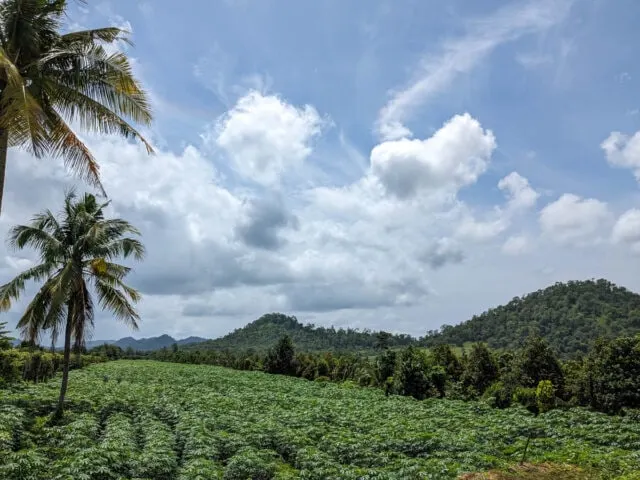
It’s not always easy to travel in Cambodia.
I don’t only refer to undeveloped infrastructure or language barrier but to its multi-dimensional history.
Cambodia has one of Southeast Asia’s most ancient and richest civilizations – with magnificent Khmer architecture, royal cuisine, and various forms of traditional art. Yet, within the astonishing Angkor Wat ruins and delicious Fish Amok, a dark side of history lies.
Cambodia in recent history
Cambodia fell under the rule of the Khmer Rouge in 1975. Millions of Cambodians were killed between 1975 and 1979. Cultural centers and information resources about Cambodian art, music, theater, and cuisine were burned to ashes.
The national trauma can still be felt to this day. The Cambodian people are some of the most welcoming and kind-hearted people that I have ever met, and yet, decades of pain and struggle can be seen in their eyes. I deeply admire them for their resilience and stubborn pursuit of happiness, even in the face of their hurtful past.
In 1979, The People’s Army of Vietnam ousted the Khmer Rouge from power. The ruling elite retreated to the Pailin province of Western Cambodia, where many former Khmer Rouge leaders remain today. Decades of consecutive war followed, and Pailin was extensively mined.
Today, it remains home to numerous unexploded landmines.
Nonetheless – Pailin’s history is far more complex and inspiring than communism and landmines. And this, I was about to find out by myself.
Traveling in Pailin, Cambodia
While waiting for my visa to enter Thailand, I stayed in Battambang (a big city in West Cambodia) for a couple of weeks. After Numerous day trips around the area, I decided to rent a motorcycle for a day and go for an adventure to the Cardamom Mountains of the neighboring Pailin Province.
It was not my first road trip in Southeast Asia, but was definitely one that I’ll never forget. Not only for the never-ending greenery of scenic mountains and pepper plantations, or stunning temple architecture and historical sites, But for the number of smiling faces, and the welcoming shouts of “Hello!” and “What is your name?” every time that I crossed a local village or passed by local vehicles on the bumpy roads.

Pailin was once a part of the mighty Khmer Empire. However, it was conquered by the Burmese in the 16th century and occupied by the Kingdom of Siam (now Thailand) until less than a century ago. Thus, the province is a melting pot of Khmer, Thai, and Burmese cultural traditions.
Prior to the Khmer Rouge, the people of Pailin were predominantly Kola. The Kola people migrated from Myanmar in the 19th century and were followed by the Burmese Shan ethnic group several decades later. This affinity to Burmese culture is still shown in the region’s dress, arts, festivals, and of course – cuisine.
After half a day of riding through the mountains, I arrived in Krong Pailin, the province’s capital – hungry for a feast.
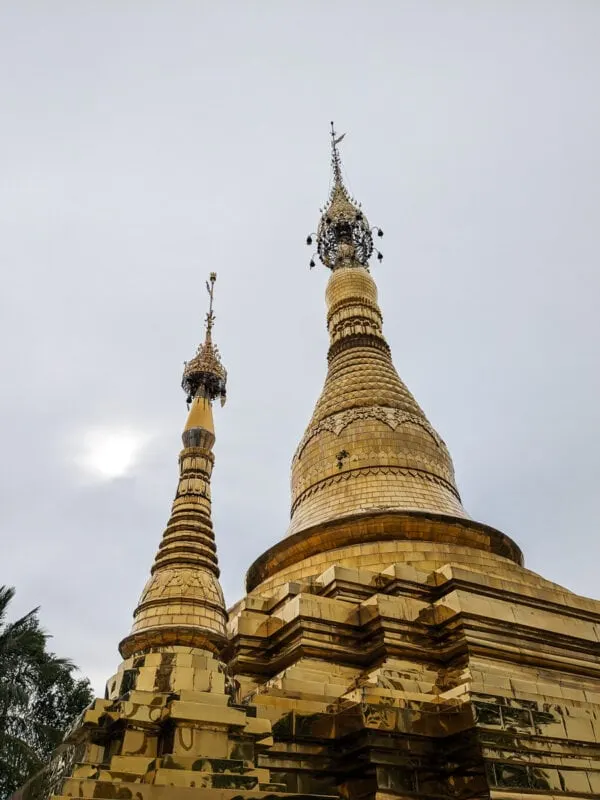
Eating in Krong Pailin
I parked my motorcycle in front of the city’s main temple – a stunning Buddhist complex with a Burmese-style golden pagoda, located on the top of a hill.
As I went down, I noticed a small restaurant with an array of colorful curries, grilled fish, and spicy condiments. The female owner stood behind the pots and smiled gently. She wore a unique Kola dressing – her blouse was woven with intricate Kola patterns and golden bracelets hung from her wrists.
I approached, and couldn’t keep myself from asking her about her life in Pailian, the Kola people, and their unique cuisine. She happily explained that Cambodian Kola cuisine is quite different from Burmese cuisine nowadays, since the community was isolated from Burmese influence for generations, and their gastronomy developed independently.
I ordered the restaurant’s signature dish, Mee Kola, and another curry dish of chicken and Thai eggplants, as it was a dish that I had never seen in other provinces in Cambodia, and was eager to try.
Mee Kola
Mee Kola, or Kola Noodles, is a light and refreshing dish of rice vermicelli, steamed and cooked with soy sauce and garlic chive. They were served with peanuts, sweet pickles, and a softly boiled egg.
The textural balance between the crunchiness of the peanuts and tangy veggies and the softness of the egg and rice noodles was delightful.
The sweet and sour flavors of the sauce were complimented with an additional umami touch of fish sauce and dried shrimp – one of my favorite ingredients.
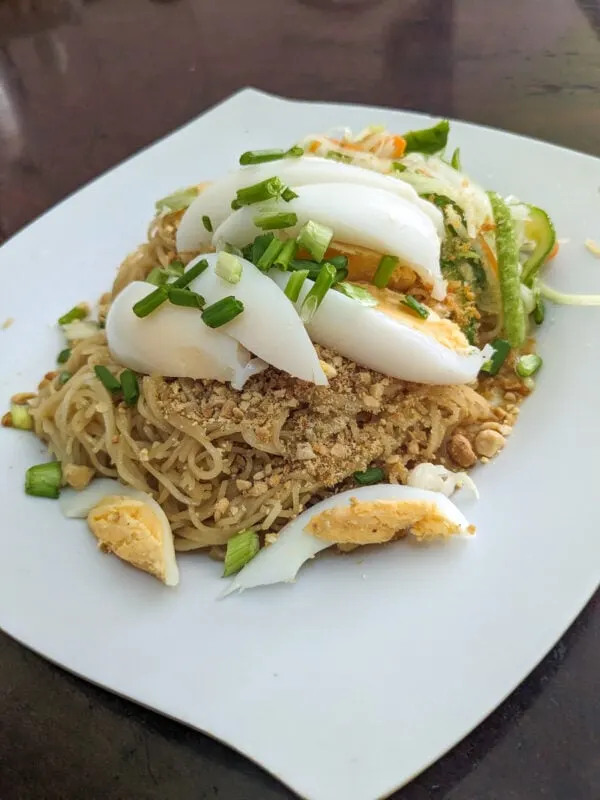
Chicken Eggplant Curry
The second dish took me by surprise. Khmer curries are generally mellower than their Thai, Malaysian, and Burmese counterparts. They also tend to be less heavy on oily products, such as coconut milk.
This dish, in a way, reminded me of Pailin’s proximity to Thailand.
It had a fiery flavor to it, bursting with aromatic flavors of galangal, lemongrass, and holy basil leaves.
While being very different from more popular Khmer curry dishes such as Fish Amok and Samlor Machu Kroeung, it was also not a Thai dish.
For me, this curry represents the unique gastronomy of the Pailin province, absorbing so many external influences, while preserving its own, one-of-a-kind character.
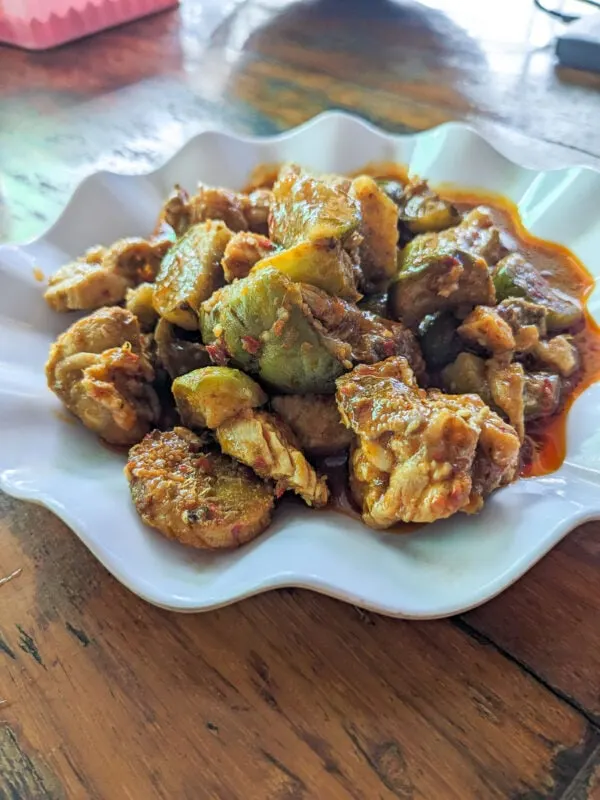
Pure, but connected
The pursuit of authenticity and purity in culture, and especially cuisine, has been becoming more and more relevant nowadays, serving one’s sense of cultural, ethnic, or national identity.
Yet, Pailin has reminded me that a culture cannot be completely isolated from outer influences, stubbornly holding onto its peculiarity. It cannot run away from changes and new ideas.
Perhaps it shouldn’t.
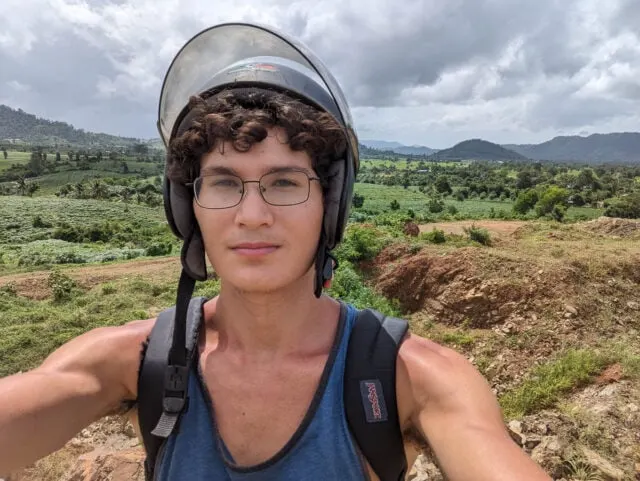
For an additional taste of Oz’s journey, have a look at his Cha Kroeung (lemongrass chicken) recipe.
If you liked this recipe, here are some similar dishes you may enjoy!

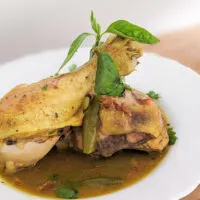
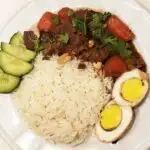
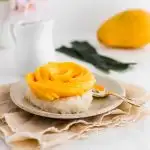
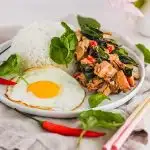
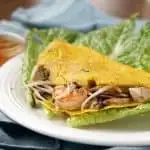
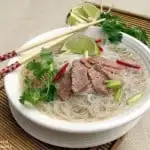
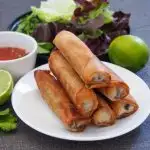

Michal
Wednesday 3rd of April 2024
I really enjoyed reading the article. Gave me new ideas and a desire to travel. There is no doubt that when I get to the area I will do this route Thank you!
Anna Sela
Wednesday 3rd of April 2024
wow! Amazing article, inviting us to join Oz in his culinary cultural travel. Lively writing of a full hearted traveler, enthusiastic with everything, local food, people, history and culrure - all served to us generously in Oz special vivid writing. Applause!
Mary
Tuesday 2nd of April 2024
Thanks Oz, enjoyed the history lesson. In the last 6 months I've made 2 trips to Asia visiting Vietnam, Cambodia, Bhutan, Laos and a few days in Bangkok. What a fascinating part of our world. So beautiful to see how other good people live and interact in their communities. Any suggestions on books to read to learn more about the history in that part of the world? We also have traveled to China and India and I can see and hear similarities. Safe travels! Mary
Oz Ilan
Tuesday 14th of May 2024
@Mary, Hello Mary, I would definitely recommend Penny Van Esterik's "Food Culture in Southeast Asia" as a starter. It gives an overview on Southeast Asian gastronomy and anthropology, and it certainly gave me a better understanding of the region. I hope that helps! Take care, Oz
Ian
Sunday 31st of March 2024
Oz - This sounds amazing! Makes we want to get on an airplane tomorrow and follow your "foodsteps" :)
Marakhazir
Friday 22nd of March 2024
Oz is Brilliant. His knowledge and passion for different cultures and foods are like no other. Experiencing his journey from up close and reading about it is a fascinating learning experience. Ozi you are the best!